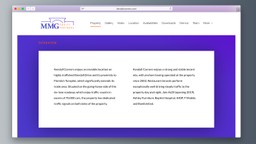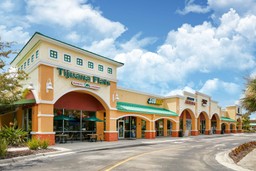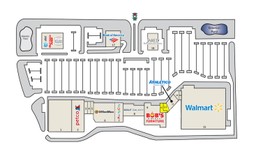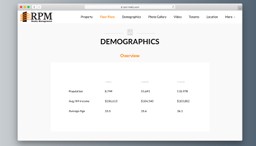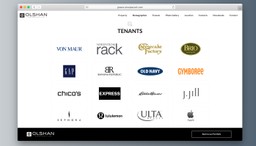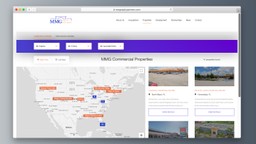
Marketing Best Practices
Retail Property Marketing: 3 Best Practices
Marketing is not essential only to maintaining healthy sales and traffic at every retail property. In today’s age of ever-expanding digital interconnectivity owners and brokers require a carefully planned and executed strategy to get in front of potential tenants and investors.
So, how do you market a retail property to an audience that is increasingly spending more time online to look for deals and spaces?
Below we outlined 3 best practices to successfully market and increase visibility for your retail properties.
1. Create All Essential Content
Compelling Property Description
A well-crafted commercial property description for your retail space should be succinct (aim for 100-200 words), highlights key selling points, defines who the property is for, and avoids jargon and cliché. Provide informative copy in a short and clear manner with key supporting statistics, without over explaining.
Professional Photography
Commercial real estate photography will do much of the heavy lifting. Photos should be carefully selected from work by a professional to highlight the absolute best aspects of the property. It’s difficult to truly capture what it feels like to be inside of a property. Hire someone who has experience doing so and your marketing efforts will benefit from it.
Video Content
Beyond photography, videos can be a portal into the property and how it is structured. Video content will highlight key amenities referenced in your description, showcase the best elements of the property and provide a visual reference for the floor plan. Drone videos showcase your property from the air and can beautifully capture the area to better understand the location
Retailer Maps
It goes without saying that surrounding amenities within a trade area or neighborhood of your target property are critical to highlight. Create an interactive real estate map to display and reinforce as many of these details as you can to help strengthen the value proposition for your property.
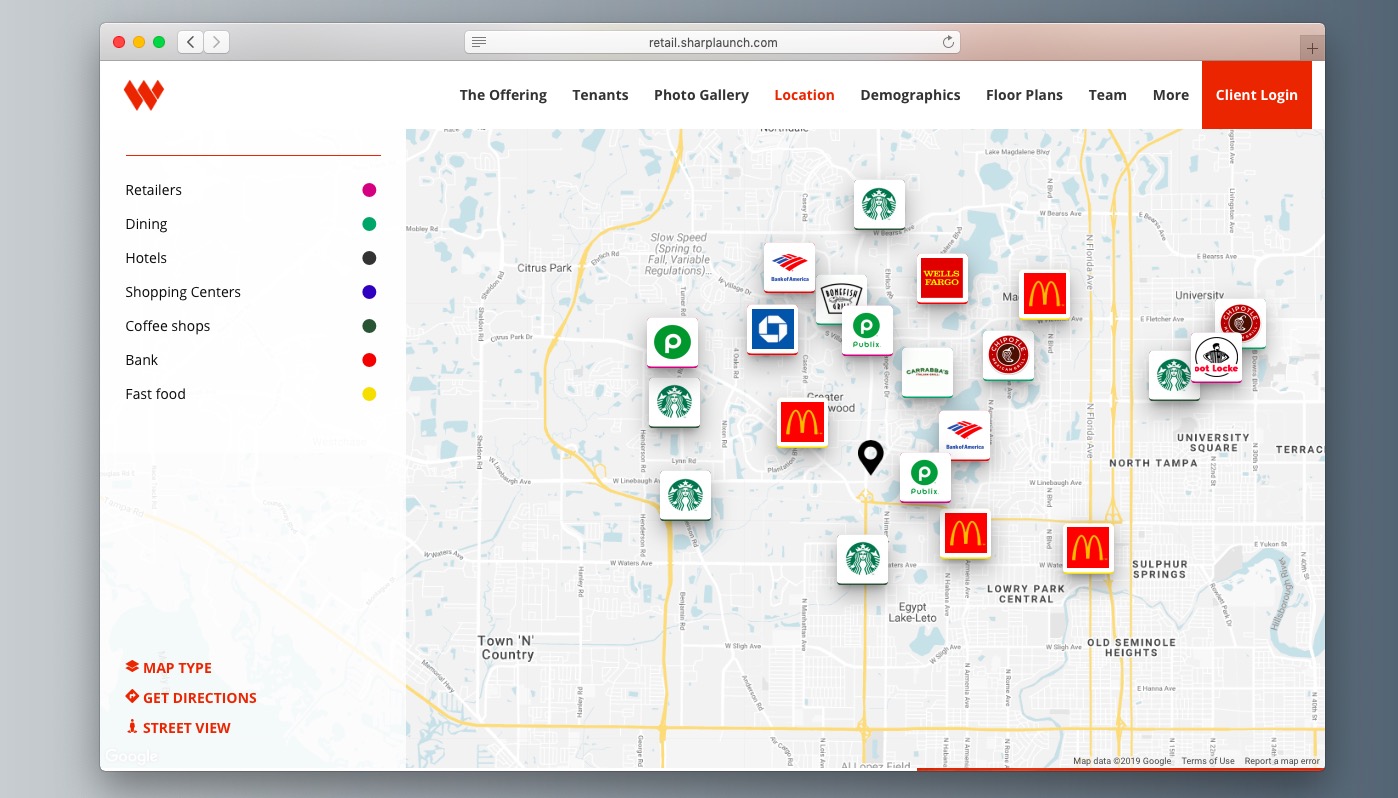
Learn more about Why You Need a Real Estate Amenities Map.
Site Plan for Property
Site plans are a great way to visually depict the overall property, including outdoor amenities like parking, storefront space, etc. are important elements to supplement your descriptions with.
Demographics Data
Demographics provide useful data about the population in the proximity of the property, such as average household income, population density, traffic counts, etc to help your potential tenants/investors quantify the current market size and extrapolate future growth.
Current Tenants
Similar to the impact of location, it matters who else is already at the property. Showcasing the existing tenant base helps create “social proof” for your property, identifies potential competitors or gaps, and provides ideas for possible synergies with existing brands.
2. Package Your Content
Today’s retail buyers/tenants want 1) convenience and 2) speed so why not give it to them?
Once you have crafted all your essential content, it’s time to put into use across different marketing assets that are readily accessible and easy to digest.
Here is a checklist for key marketing materials you will need to help equip you with a streamlined process when you’re ready to start promoting your space:
Sales Assets
- Interactive deal sites – web-based listing presentation that provides key highlights of the opportunity and quick access to key selling documents
- PDF teaser – document version of the deal summary that can be both emailed or printed at anytime
- Offering Memorandum – full OM that conveys comprehensive details about the opportunity through use of visual and informative content
- Email templates – professional HTML email template(s) for deal announcements, reminders, call for offers, etc.
Lease Assets
- Property website – use as a hub to showcase the property, essential details and any existing availabilities
- Property flyer – document version of the deal summary that can be both emailed or printed at anytime
- Email templates – professional HTML email template(s) for making announcements, reminders, and follow ups.
3. Promote Your Retail Space
Once you’ve developed your marketing assets and prepared the supporting content needed to promote your property, it’s time to raise awareness and expand reach for your listings.
To supplement the efforts of your brokers in generating leads there are several channels that offer unique benefits for you to consider, including:
A Property Website
If you invested time and money into creating the above mentioned marketing assets, the most effective way to promote it is through a property listing website. The benefit of posting all your content in one place is to provide users with a streamlined experience where they can simply visit a URL you shared with them, get all the relevant information from the teaser and request more information or arrange a tour directly from the website. A design agency can help building that, or you can look into using an all-in-one commercial real estate marketing software.
Your Company Website
Your company’s primary website is the first place you should feature your commercial properties for lease or sale.
One of the most effective resources you can add to your company website is a an interactive property search engine, searchable by location, property type, availabilities, and other factors of importance to prospective tenants. This helps to showcase your full list in a user-friendly interface.
You can link back to the property website or a listing page, provide a download of the brochure behind a form (so you can capture user information and follow up), and quickly generate leads using contact forms.
At this point, you likely have a large database of leads. These are individuals you already know are interested in properties in the geographic location you’re targeting and should be your initial targets.
There are three things to consider when using email to promote a new property:
- List Segmentation – Avoid blasting a large email list every time you have a new listing. This means at least some people are getting information that isn’t relevant to them and will make future emails less effective. If possible, segment by location, property type, buyers vs. renters, and previous clients.
- Template Design – Create different email templates depending on transaction type and the objectives of the campaign: call for offers, announcements, follow up campaigns etc.
- Write for Your Audience and Pipeline Stage – With the email list segmented and depending on the sales stage they’re in, write unique content for the target audience.
Social Media
There are dozens of social media channels, but only three you should consider for your retail marketing and advertising efforts:
- LinkedIn – If you can choose only one, LinkedIn is the most effective platform for reaching business professionals. It provides resources for personal network, business promotion, and advertising that are all catered to reaching people when they’re already thinking about what you have to offer. When posting to LinkedIn, stay active 2-3 times per week and provide a mix of thought leadership and promotional pieces showcasing your properties.
- Twitter – Twitter is trickier as it represents a cross-section of every corner of the professional, political, and celebrity worlds. It’s hard to be heard in such a cacophony of messages, especially when the average tweet is only visible for 18 minutes. Visual content is important on twitter to capture attention, as is content relevant to your audience. Engage with other users and respond to messages posted by people who speak to your target demographic as much as possible.
- Facebook – Facebook is the world’s watercooler, where everyone has an account, but it also suffers from the perils of that ubiquity. Reaching your audience here generally requires paid advertising, and there are strict rules about real estate listings – commercial or otherwise. It’s recommended you post thought leadership content and target your audience carefully, using retargeting tools to show ads only to previous visitors to your website.
Read more about how to use social media effectively in our detailed guide to social media marketing for commercial real estate.
Commercial Real Estate Listings Sites
You likely already know about and have your property listings on the major commercial real estate websites like CoStar and LoopNet, but there are dozens more that cater to specific markets and property types. These platforms allow you to rapidly amplify your message and reach your exact market where they start their searches, and not necessarily always with a large cost associated.
Paid Online Advertising
Advertising your listings has a number of clear benefits, including the ability to reach a large targeted audience almost instantly, get immediate results to test your marketing collateral and targeting, an investment that can be easily measured to determine ROI.
These are the most important channels through which you can generate visibility:
- Trade journals – Commercial real estate trade journals offer specialized content focus that trade publications have for commercial real estate topics. Advertising in commercial real estate trade journals gives you the chance to reach a highly targeted audience of potential clients and partners and at the same time drive brand awareness for your business.
- News sites & specialized blogs – Much like trade journals, CRE industry news sites and blogs are designed to provide thought leadership and industry news to professionals in the commercial real estate industry. They usually have large visitor numbers that you can target through your ads.
- Google AdWords – Google AdWords is the advertising platform on Google’s search results. It also powers display ads and video advertising on millions of websites and YouTube. Google’s ad network is extensive. It reaches billions of people around the globe, and is ubiquitous on both desktop and mobile devices.
Conclusion
Whether you’re preparing to put a new property on the market or have been struggling to reach your targets with existing an existing listing, staying proactive with an effective marketing plan can help ensure you maximize success.
Use the above elements in your retail marketing plan to expand your reach to more prospects who might be interested in your property listings.
Related Blog Posts
CRE Technology
5 Reasons Why Salesforce Needs a CRE Marketing Platform
Salesforce isn’t only the most widely used CRM, it’s also the leading choice in the...
Company updates
Streamline Your Outreach with Tag-Based Email Campaigns
We are thrilled to announce the launch of our new Tag-Based Email Campaign feature, designed...
Company updates
SharpLaunch Announces New Integration with LandSearch
We’re excited to announce a groundbreaking integration with LandSearch, a prominent online...

